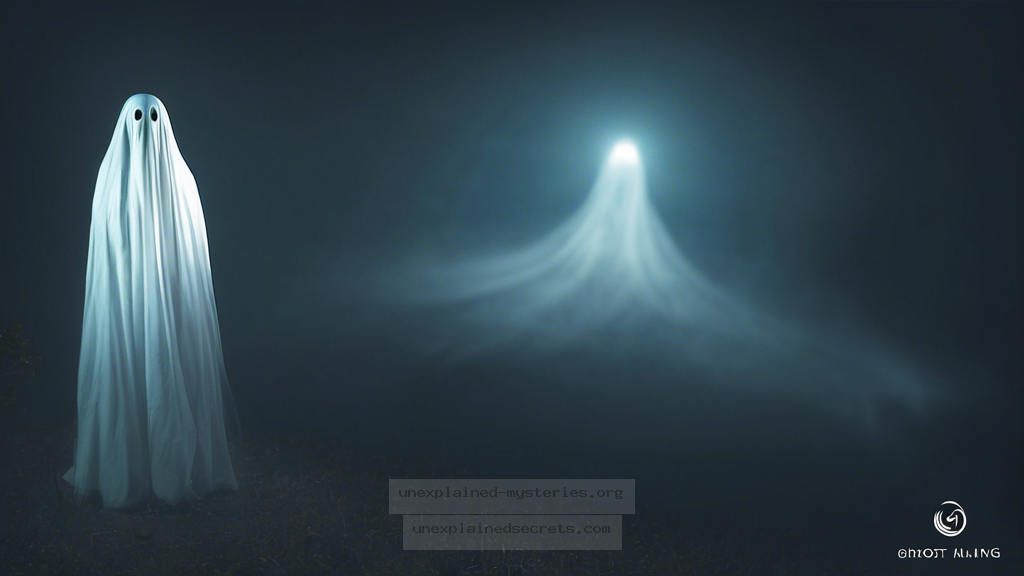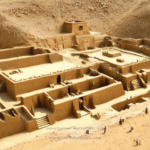What Can We Learn from the Most Compelling Ghost Sightings That Remain Unexplained?
What Can We Learn from the Most Compelling Ghost Sightings That Remain Unexplained?
The phenomenon of ghost sightings has long captivated the human imagination, with countless stories of apparitions and spectral encounters reported throughout history. But what does it mean when these encounters remain unexplained? Why do certain sightings become legendary, while others fade into obscurity? This blog post explores this intriguing question, diving into specific cases, theories, and the implications of these ghostly manifestations. Understanding the nature of these sightings not only sheds light on the paranormal but also offers a glimpse into human psychology, cultural beliefs, and the mysteries of existence itself. Let’s embark on this haunting journey together.
Historical Context of Ghost Sightings
Ghost sightings are not a modern phenomenon; they have been documented for centuries across various cultures. The ancient Greeks and Romans believed in spirits of the deceased that would linger on Earth, often haunting places where they met untimely ends. The famous Roman historian Pliny the Younger wrote about apparitions in his letters, while the Greeks had elaborate myths involving the afterlife and ghostly visits. In the Middle Ages, ghost sightings were often interpreted through a religious lens, seen as omens or divine messages.
One notable case from history is the “Brown Lady of Raynham Hall,” which surfaced in the early 18th century. A photograph taken in 1936 by photographers from Country Life magazine purportedly captured the ghostly figure of Lady Dorothy Walpole, believed to haunt her ancestral home. This photo remains one of the most famous ghost images, sparking debates about its authenticity and the nature of ghost sightings.
Core Concepts Surrounding Ghost Sightings
At its core, the study of ghost sightings intersects various disciplines, including psychology, sociology, and paranormal studies. Common concepts that arise in discussions about ghost sightings include:
- Residual Hauntings: These are instances where a ghost seems to replay a particular event over and over, often without any interaction with the living.
- Intelligent Spirits: Unlike residual hauntings, these spirits are believed to have awareness and can interact with the living.
- Environmental Factors: Some researchers suggest that certain environmental conditions, such as electromagnetic fields or infrasound, can induce feelings of unease or visions of apparitions.
Understanding these core concepts provides a framework for investigating and interpreting ghost sightings, allowing enthusiasts and skeptics alike to explore the mysterious realm of the paranormal.
Real-World Examples of Compelling Ghost Sightings
Numerous documented cases of ghost sightings continue to perplex both believers and skeptics. Here are a few of the most compelling examples:
The Amityville Horror is one of the most infamous ghost stories in American history. After the Lutz family moved into the house where a brutal murder had occurred, they reported a series of terrifying paranormal events, including strange noises, apparitions, and even physical attacks. The story has been the subject of books, films, and extensive media coverage, yet many aspects remain unexplained.
Famous for inspiring Stephen King’s “The Shining,” the Stanley Hotel in Estes Park, Colorado, is said to be haunted by its original owner, F.O. Stanley. Guests have reported seeing apparitions, hearing piano music from an empty ballroom, and experiencing cold spots in rooms. The hotel’s rich history and reported sightings make it a popular destination for ghost hunters.
Core Theories Explaining Ghost Sightings
While the existence of ghosts is widely debated, several theories attempt to explain why people experience ghost sightings. Some of the most prevalent theories include:
- Psychological Explanations: Many ghost sightings can be attributed to psychological factors such as pareidolia (seeing patterns where none exist), hallucinations, or the power of suggestion.
- Quantum Physics: Some theorists propose that the existence of parallel universes or dimensions could account for ghost sightings, suggesting that spirits are simply beings from another realm.
- Electromagnetic Fields: Research indicates that exposure to certain electromagnetic fields can cause feelings of anxiety, unease, and even hallucinations, leading to ghostly experiences.
These theories provide a scientific lens through which to examine ghost sightings, offering insight into human perception and the nature of reality.
Practical Implications of Ghost Sightings
The implications of ghost sightings extend beyond mere curiosity. They can impact cultural beliefs, mental health, and even local economies. For instance, many towns with a reputation for ghost sightings experience tourism booms, as ghost hunters and curious visitors flock to explore haunted locations. Additionally, for individuals who experience these sightings, the psychological impact can be profound, leading to feelings of fear, confusion, or even spiritual awakening.
Local economies often benefit from ghost tours, haunted house attractions, and paranormal investigations, with towns capitalizing on their ghostly reputations. For example, New Orleans, known for its rich history and ghost sightings, offers numerous ghost tours that draw tourists year-round.
Alternative Perspectives on Ghost Sightings
While many people believe in the existence of ghosts, there are also alternative perspectives that challenge this notion. Skeptics argue that ghost sightings are merely products of cultural conditioning, psychological phenomena, or environmental factors. In their view, the human brain is wired to seek explanations for the unknown, often leading to the interpretation of ambiguous experiences as paranormal encounters.
Additionally, some scientists advocate for a more skeptical approach, emphasizing the need for rigorous investigation and evidence before accepting ghost sightings as legitimate. They argue that many purported sightings can be explained through natural phenomena, such as shadows, reflections, or even sleep paralysis.
Common Misconceptions About Ghost Sightings
Ghost sightings are often surrounded by misconceptions that can cloud understanding. Here are some of the most common myths debunked:
- All Ghosts are Malevolent: Despite popular media portrayals, not all ghost sightings involve malevolent spirits. Many reported encounters are benign or even comforting.
- Ghost Sightings are Always Visual: While many ghost sightings involve visual apparitions, they can also manifest as sounds, smells, or feelings.
- Ghosts Only Appear in Specific Locations: Ghost sightings can occur anywhere, not just in traditionally haunted locations. Even modern homes can be sites of unexplained phenomena.
Clarifying these misconceptions helps foster a more nuanced understanding of ghost sightings and the experiences surrounding them.
Best Practices for Investigating Ghost Sightings
If you’re interested in investigating ghost sightings, following best practices can enhance your experience and understanding:
- Document Everything: Keep a detailed journal of your experiences, including times, locations, and feelings associated with sightings.
- Use Technology Wisely: Employ devices like EMF detectors, infrared cameras, and audio recorders to gather evidence while remaining critical of the results.
- Engage with the Local Community: Speak with locals about their experiences and gather historical context, which can enrich your investigation.
Approaching ghost investigations with respect, an open mind, and a critical perspective can lead to meaningful insights and revelations.
Future Developments in Ghost Research
As technology advances, so too does the potential for new discoveries in the field of ghost research. The use of artificial intelligence and machine learning may help in analyzing patterns in ghost sightings and understanding common characteristics. Additionally, virtual reality could offer new avenues for exploring haunted locations and experiences without physical presence.
Moreover, interdisciplinary approaches that combine psychology, physics, and cultural studies may provide deeper insights into the complexities of ghost sightings. Continuous dialogue between skeptics and believers can help bridge the gap, fostering a more comprehensive understanding of this enduring mystery.
Conclusion: The Unexplained Nature of Ghost Sightings
Ghost sightings remain one of the most compelling mysteries of our time, intertwining history, psychology, and cultural beliefs. While some may dismiss these experiences as mere figments of imagination, the multitude of documented encounters invites deeper exploration and understanding. By examining historical context, core concepts, real-world cases, and different perspectives, we gain valuable insights into the nature of these sightings.
As we continue to investigate the unexplained, we may not only uncover the truth about ghosts but also learn more about ourselves and the world we inhabit. Whether you are a skeptic or a believer, the journey into the realm of ghost sightings offers endless possibilities for discovery and reflection. So, what can we learn from the most compelling ghost sightings that remain unexplained? The answers may lie within our own experiences and perceptions, waiting to be unveiled.
Other Articles
Recent Posts
- What Happened to Flight MH370? The Conspiracy Theories That Still Haunt Us
- What Secrets Lurk Within the Walls of the Infamous Trans-Allegheny Lunatic Asylum?
- What Evidence Supports the Existence of Bigfoot in the Pacific Northwest?
- What Happened to the Indus Valley Civilization? Unraveling the Mysteries of Ancient Urban Life
- Can Telepathy Be Scientifically Proven Through Laboratory Evidence?







